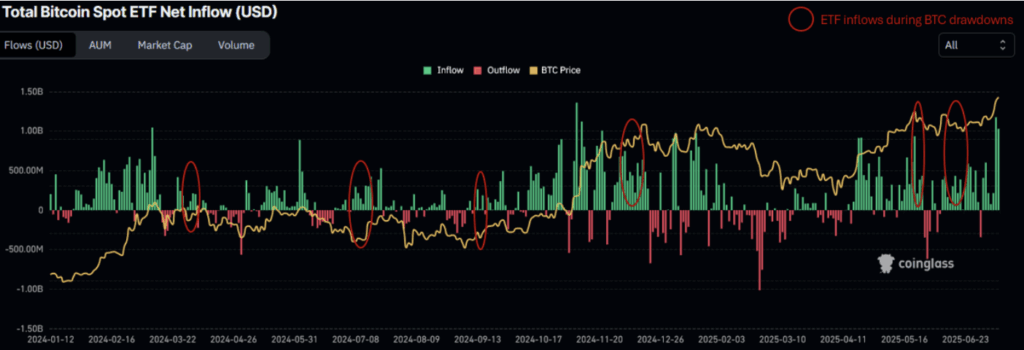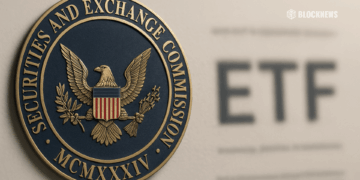- Bitcoin’s shift into the institutional spotlight is reshaping how it’s used and perceived—from speculative rebel to financial asset.
- Spot ETFs and reduced volatility are laying the foundation for broader adoption and real-world use cases.
- Institutional money could drive trillions into Bitcoin, but it also brings challenges like custodial risks and
Bitcoin’s journey from internet fringe experiment to legit financial player has been… well, kind of wild. It wasn’t exactly easy to get Wall Street to pay attention to a decentralized currency born out of cypherpunk ideals. But here we are. Bitcoin’s stuck around long enough to convince institutions it’s not going away—and they’re finally tuning in.
Things really kicked into gear with the green light for US spot Bitcoin ETFs in January 2024. Suddenly, BTC wasn’t just for crypto bros and cold storage wallets—it became available through brokerage accounts, pension plans, and even insurance packages. That shift didn’t just push the price higher—it gave Bitcoin roots. Real ones. The kind you need if you’re gonna evolve from a speculative asset to a stable store of value (and maybe someday, an actual payment tool).
Institutions Change the Game—Slow and Steady
Retail investors are kinda all over the place—buying the top, panic-selling the bottom. Institutions? Not so much. They think long-term, act a little slower, but when they move, they move big. And their behavior is already putting a chill blanket on Bitcoin’s usually chaotic market.
Look at ETF flows. Since those spot ETFs launched, we’ve seen net inflows even when prices dip. Take BlackRock’s IBIT—it kept pulling in capital while retail investors sat on their hands. Sure, early 2025 got messy—tariff drama, election noise, general market panic—but on the whole, big money isn’t flinching.
The numbers tell the same story. Bitcoin’s 30-day rolling volatility? Way down. Back in the 2019–2022 days, it’d spike over 100%, even 150% during the wild bits. But lately? It’s chillin’ around 35%. That’s edging closer to the likes of the S&P 500 and gold. Pretty wild to think about, right?

Steady Price = More Than Just a Calm Market
Less volatility isn’t just a win for investor anxiety—it makes BTC easier to actually use. When prices don’t swing wildly every day, merchants might start giving it a second look. Nobody wants to sell coffee for $5 in BTC one day and realize they just gave away $9 the next. Predictable pricing matters.
Sure, most on-chain activity is still dominated by long-term holding and good ol’ speculation, but that could change. A calmer market opens the door to use cases we’ve been talking about for years—but haven’t really seen. Payments, remittances, microtransactions? They all need stability to work. We’re not there yet, but the groundwork is forming.

Advisors, Pensions, and the Snowball Effect
Here’s where things really get spicy. Institutions aren’t just making markets more stable—they’re unlocking access. Think: retirement accounts, hedge funds, financial advisors offering BTC to clients who don’t want to mess with seed phrases or cold wallets. The barrier’s getting lower.
In just a year and a half, US spot Bitcoin ETFs pulled in $143 billion AUM. That’s not pocket change. Ric Edelman, a giant in the TradFi world, just dropped a bombshell: his latest guidance suggests even conservative folks should hold 10% crypto. Aggressive? Try 40%. Wild, but it’s catching on.
Now consider this: investment advisers manage $146 trillion (yep, trillion with a “t”). A 10% shift to crypto? That’s $14.6 trillion potentially flowing into the market. Even 1% would mean $1.4 trillion in fresh demand—nearly half the size of Bitcoin’s current market cap. That’s not theory. That’s fuel.
Pension funds are creeping in, too. Wisconsin and Indiana already dipped their toes into Bitcoin ETFs. And once something shows up in a retirement portfolio, it’s not seen as “weird” anymore—it’s just another line item. That psychological shift is everything.
Bitcoin’s transformation isn’t just about price anymore. It’s about legitimacy, access, and relevance in the real world. But yeah, there’s a cost to that.
The more traditional Bitcoin becomes, the more it risks becoming… well, traditional. Custodial risks, regulatory pressures, centralization—they’re not small things. But for now, the tide’s rolling in, and it looks like Bitcoin’s wearing a suit.














